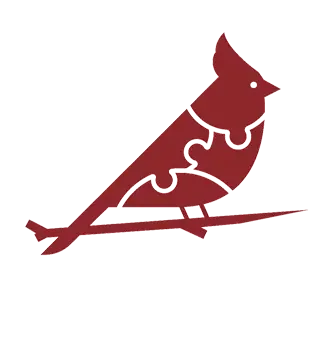At Cardinal Pediatric Therapies, we understand that helping children with autism gain independence is a vital goal for parents, therapists, and educators alike. Our commitment to fostering autonomy, self-awareness, and emotional regulation is reflected in our use of self-management techniques, which have proven to be effective in daily life.
These strategies empower children to recognize their behaviors, set personal goals, and take actionable steps toward achieving them. Through this process, they build confidence and develop essential functional skills.
In this article, we will explore evidence-based self-management techniques for children with autism. We will also discuss how these methods can be personalized to meet individual needs and seamlessly integrated into a child’s ABA therapy plan at Cardinal Pediatric Therapies.

Why Self-Management Matters for Children with Autism
Self-management refers to the process of monitoring and regulating one’s own behaviors, emotions, and daily tasks. For children with autism spectrum disorder (ASD), these skills can lead to meaningful improvements in daily routines, school readiness, social interaction, and overall well-being.
When children are taught how to self-monitor and self-regulate, they become active participants in their own development. This approach supports long-term independence while reducing reliance on adult prompts and support.
Visual Supports and Tools for Daily Routines
Visual aids are one of the most accessible and effective self-management tools for children with autism. These include:
- Visual schedules for organizing daily activities
- Task boards or step-by-step charts
- Picture exchange systems (PECS)
- Icons and symbols that represent expected behaviors
By offering predictable, easy-to-understand visual representations of tasks and expectations, children can develop a clearer sense of structure. Over time, they learn to follow these cues independently, supporting both self-direction and emotional regulation.
Goal Setting for Personal Achievement
Introducing the concept of setting and achieving goals can be incredibly motivating for a child on the autism spectrum. ABA therapists often work with families to set measurable, attainable goals based on the child’s current skill level. Examples might include:
- Getting dressed independently
- Completing a homework assignment without prompts
- Using calming strategies during transitions
Goal setting provides a sense of purpose and encourages children to take ownership of their progress.

Teaching Self-Monitoring Skills
Self-monitoring is a core self-management technique in autism therapy. It involves teaching children to recognize and track their own behavior and emotional state. This can be done with:
- Checklists
- Emotion rating scales
- Behavior tracking charts
Children might record how often they raise their hands in class, use appropriate language, or complete tasks without reminders. These tools create awareness and reflection, which helps improve consistency and personal responsibility.
Reinforcement Systems That Promote Independence
Reinforcement is a key principle of ABA therapy and a crucial part of any self-management system. Children are more likely to repeat positive behaviors when they know rewards are available.
Some examples of reinforcement systems include:
- Earning tokens or stickers for completed tasks
- Gaining access to a preferred activity or item
- Earning privileges for meeting goals
Over time, reinforcement can shift from external rewards to internal motivation, especially when children understand the value of their efforts.
Encouraging Choice-Making and Autonomy
Autonomy builds confidence. Offering choices throughout the day gives children with autism the opportunity to make decisions about:
- What activity do they want to do first
- Which reinforcement item would they prefer
- How they want to complete a task (sitting at the table or on the floor, for example)
When children feel a sense of control, they tend to be more engaged and cooperative, which in turn enhances the learning experience.
Developing Self-Calming Strategies
Learning how to manage emotional and sensory responses is essential for long-term self-regulation. Parents and therapists can teach self-calming techniques such as:
- Deep breathing exercises
- Use of sensory tools (fidget toys, weighted blankets, chewable jewelry)
- Listening to calming music or nature sounds
- Practicing mindfulness or grounding activities
These techniques are beneficial during transitions, changes in routine, or moments of sensory overload.

Using Time Management Tools
Many children with autism benefit from time management support. Visual timers, countdown apps, or simple sand timers can help children:
- Understand how long a task will take
- Prepare for transitions
- Stay on track during independent work time
Consistent use of timers also teaches patience, predictability, and structure—key elements of effective self-management.
Teaching Problem-Solving Skills
Problem-solving is a highly developed self-management skill that involves identifying challenges and devising practical solutions. While this may require adult support initially, children can learn how to:
- Identify a problem
- Think of possible solutions
- Choose the best option
- Reflect on the outcome
For example, if a child drops a toy, rather than crying or waiting for help, they can be taught to retrieve it or ask politely for assistance.
Promoting Peer Modeling and Social Learning
Peer modeling is an indirect self-management technique that encourages children to observe and replicate appropriate behaviors demonstrated by others. This can happen:
- In school settings
- In group therapy sessions
- During structured playdates
When children with autism see their peers using strategies like taking turns, asking for help, or calming down independently, they are more likely to adopt those behaviors themselves.
Building Communication and Expression Skills
Practical communication skills are foundational to self-management. Whether a child uses verbal language, AAC devices, sign language, or PECS, they need reliable ways to express:
- Their needs and preferences
- Emotions like frustration or excitement
- Requests for help or a break
Improving communication reduces reliance on behaviors such as tantrums or avoidance, leading to smoother interactions and more independent decision-making.
Support from ABA Therapy and Parent Coaching
At Cardinal Pediatric Therapies, we incorporate these self-management techniques into our customized ABA therapy programs for children with autism in Arizona and North Carolina. Our board-certified behavior analysts (BCBAs) and registered behavior technicians (RBTs) work closely with families to tailor therapy sessions to each child’s goals, strengths, and learning preferences.
Parents also receive training and coaching to support these self-management strategies at home, ensuring consistency and progress beyond the therapy setting.

Cardinal Pediatric Therapies: Helping Children with Autism Thrive
With consistent support and the right tools, self-management strategies can become a powerful part of a child’s developmental journey. Whether it’s tracking behavior with a checklist, using a visual schedule to stay organized, or learning how to ask for a break, these skills pave the way toward independence, confidence, and long-term success.
Suppose you are looking for ABA therapy in Arizona or North Carolina. In that case, Cardinal Pediatric Therapies offers personalized programs designed to help your child build life-changing skills—including self-management techniques tailored just for them.











